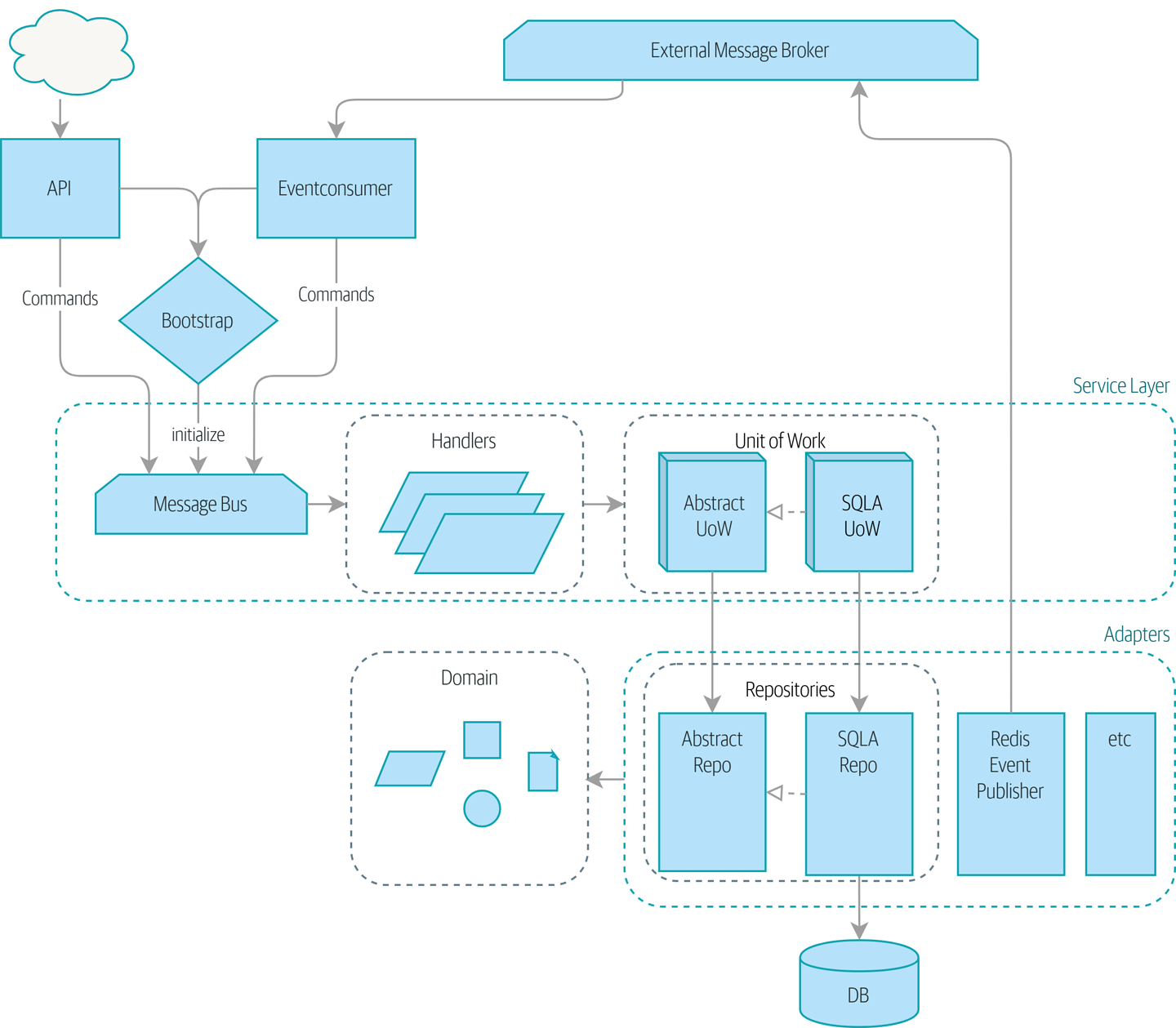Appendix A. Summary Diagram and Table
Here’s what our architecture looks like by the end of the book:

Table A-1 recaps each pattern and what it does.
| Layer | Component | Description |
|---|---|---|
Domain Defines the business logic. |
Entity |
A domain object whose attributes may change but that has a recognizable identity over time. |
Value object |
An immutable domain object whose attributes entirely define it. It is fungible with other identical objects. |
|
Aggregate |
Cluster of associated objects that we treat as a unit for the purpose of data changes. Defines and enforces a consistency boundary. |
|
Event |
Represents something that happened. |
|
Command |
Represents a job the system should perform. |
|
Service Layer Defines the jobs the system should perform and orchestrates different components. |
Handler |
Receives a command or an event and performs what needs to happen. |
Unit of work |
Abstraction around data integrity. Each unit of work represents an atomic update. Makes repositories available. Tracks new events on retrieved aggregates. |
|
Message bus (internal) |
Handles commands and events by routing them to the appropriate handler. |
|
Adapters (Secondary) Concrete implementations of an interface that goes from our system to the outside world (I/O). |
Repository |
Abstraction around persistent storage. Each aggregate has its own repository. ... |
Get Architecture Patterns with Python now with the O’Reilly learning platform.
O’Reilly members experience books, live events, courses curated by job role, and more from O’Reilly and nearly 200 top publishers.

